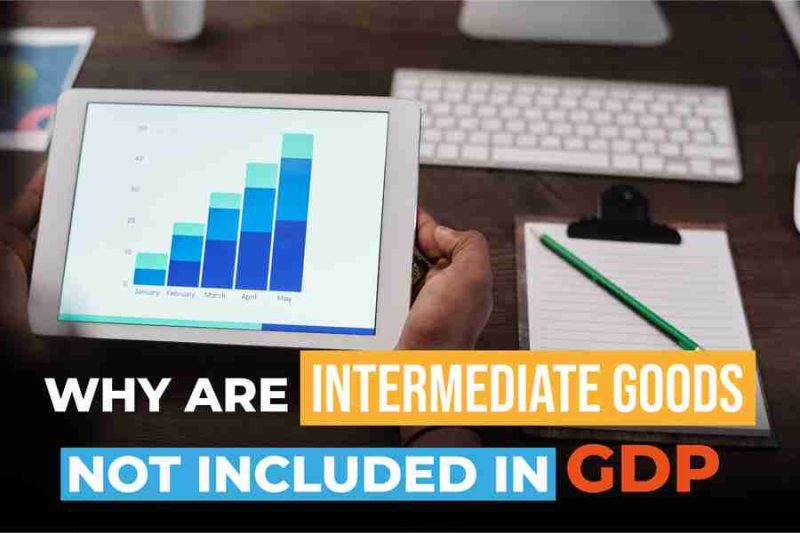Intermediate goods are an often misunderstood and overlooked part of economics, but they play a key role in the economy. GDP, or Gross Domestic Product, is the sum of all goods and services produced within a country over a given period of time. But, what many people don’t realize is that intermediate goods are not included in the calculation of GDP. So, why are intermediate goods not included in GDP? To answer this question, it’s important to understand the difference between intermediate goods and final goods, as well as the concept of double-counting. Intermediate goods are goods that are used as inputs in the production of other goods, while final goods are goods that are used for final consumption or investment. Double-counting occurs when the same product is included more than once in the calculation of GDP. By understanding these concepts, we can begin to explore the economics behind why intermediate goods are not included in GDP.
Why Are Intermediate Goods Not Included in GDP?
To sum up, the most important thing to understand about the Gross Domestic Product is that it does not take into account intermediate goods. It does not measure the value of the goods and services used in production. That is why economists are always saying that GDP is only a snapshot of economic activity at a given moment and should be interpreted with caution. The reason for this is that we cannot account for all goods and services used in producing final goods and services. Because of this, economists have to rely on other data sources to get a more complete picture of where our economy stands now and where it will be going in the future.
What Are Intermediate Goods?
Intermediate goods are goods that are used as inputs in the production of other goods. These goods may be used for a variety of industries, such as petroleum refining, chemicals, iron and steel manufacturing, and food processing. In general, intermediate goods are used for manufacturing and not for final consumption. Intermediate goods are often produced from other intermediate goods and are not often directly sold to consumers. For example, a clothing manufacturer likely purchases fabric from a textile manufacturer that uses cotton as the raw material.
What Are Final Goods?
- Final goods are goods that are sold to consumers.
- Final consumption expenditures (FCE) are the value of final goods and services consumed by households, nonprofit institutions, and the government.
- The use of intermediate goods does not affect the production of final goods.
- Final goods are not counted in the output of the economy, but they do affect the production of other goods and services and their value.
- Final goods are not counted in the production of GDP and are, therefore, not included in the measure of economic activity.
- Final goods are not counted as part of the production process.
- When intermediate goods are used up in the production of final goods and services, their use is not included in the production of GDP, but their value is included in the value of final goods and services.
- Intermediate goods are not included in GDP because they do not influence the production of final goods and services and their consumption.
- Gross domestic product (GDP) measures all economic activity that takes place within a country’s borders.
- The output measure of GDP does not include all economic activity taking place in a country’s economy because it does not include intermediate goods used in producing final consumption or investment goods used for producing intermediate consumption or capital accumulation (Maddison, 2007).
Understanding Double-Counting
- The first step in calculating GDP is to allocate the value of all final goods and services to the income statement.
- The second step is to allocate the value of all intermediate goods and services used in producing other goods and services to the income statement.
- If these two steps are performed correctly, then we have allocated all of the value of produced goods and services correctly to income statements on an annual basis.
- Next, we need to add the value of all final consumption expenditures (i.e., spending on housing, food, transportation, etc.) on an annual basis as well as all investment spending (i.e., spending on machinery and equipment).
- Finally, we need to add all government spending on goods and services (i.e., Social Security expenditures, defense expenditures, and interest payments).
- Now that we have added all of the values correctly to income statements for all sectors (final consumption, investment, and government), it is time to calculate GDP by adding them up.
- The sum of these three numbers is GDP.
Conclusion
GDP, or Gross Domestic Product, is the sum of all goods and services produced within a country over a given period of time. Intermediate goods are goods that are used as inputs in the production of other goods, while final goods are goods that are used for final consumption or investment. When calculating GDP, double-counting must be avoided, as otherwise, it will overstate the number of goods produced. Double-counting occurs when the same product is included in the calculation of GDP more than once. To accurately calculate GDP, only final goods should be included.










